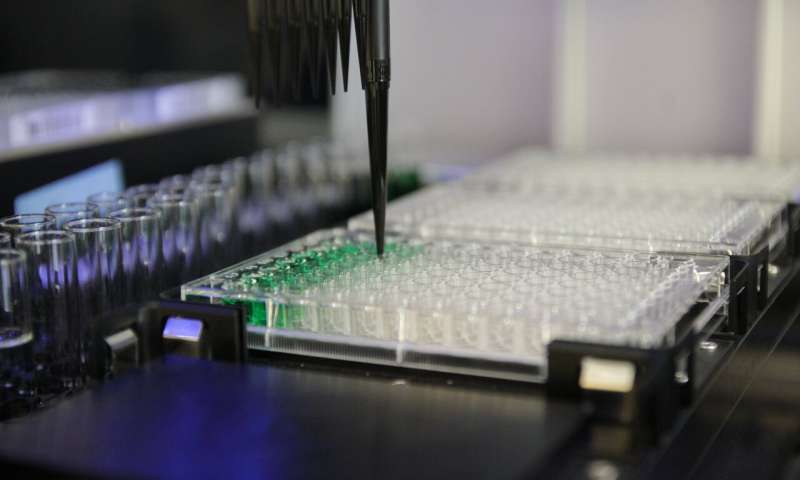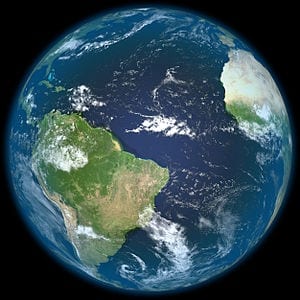
Valuable insights from the imitation of the skeleton of natural sea sponges
Scientists at Johannes Gutenberg University Mainz (JGU) and the Max Planck Institute for Polymer Research (MPI-P) in Germany have created a new synthetic hybrid material with a mineral content of almost 90 percent, yet extremely flexible. They imitated the structural elements found in most sea sponges and recreated the sponge spicules using the natural mineral calcium carbonate and a protein of the sponge. Natural minerals are usually very hard and prickly, as fragile as porcelain. Amazingly, the synthetic spicules are superior to their natural counterparts in terms of flexibility, exhibiting a rubber-like flexibility. The synthetic spicules can, for example, easily be U-shaped without breaking or showing any signs of fracture This highly unusual characteristic, described by the German researchers in the current issue of Science, is mainly due to the part of organic substances in the new hybrid material. It is about ten times as much as in natural spicules.
Spicules are structural elements found in most sea sponges. They provide structural support and deter predators. They are very hard, prickly, and even quite difficult to cut with a knife. The spicules of sponges thus offer a perfect example of a lightweight, tough, and impenetrable defense system, which may inspire engineers to create body armors of the future.
The researchers led by Wolfgang Tremel, Professor at Johannes Gutenberg University Mainz, and Hans-Jürgen Butt, Director at the Max Planck Institute for Polymer Research in Mainz, used these natural sponge spicules as a model to cultivate them in the lab. The synthetic spicules were made from calcite (CaCO3) and silicatein-?. The latter is a protein from siliceous sponges that, in nature, catalyzes the formation of silica, which forms the natural silica spicules of sponges. Silicatein-? was used in the lab setting to control the self-organization of the calcite spicules. The synthetic material was self-assembled from an amorphous calcium carbonate intermediate and silicatein and subsequently aged to the final crystalline material. After six months, the synthetic spicules consisted of calcite nanocrystals aligned in a brick wall fashion with the protein embedded like cement in the boundaries between the calcite nanocrystals. The spicules were of 10-300 micrometers in length with a diameter of 5-10 micrometers.
As the scientists, among them chemists, polymer researchers, and the molecular biologist Professor Werner E. G. Müller from the Mainz University Medical Center, also write in their Science publication, the synthetic spicules have yet another special characteristic, i.e., they are able to transmit light waves even when they are bent.
The Latest Bing News on:
Synthetic hybrid material
- Hybrid pitches draw mixed sentimentson May 7, 2024 at 10:44 am
The synthetic fibre goes into the pitch at 90 mm depth and it loops around. Only around two mm of the synthetic fibre is exposed at the surface, and the yarn is the shade of dry grass so as to blend ...
- Mido Introduces The Limited Carbon Edition Of Its Versatile Ocean Star 200Con May 7, 2024 at 2:00 am
Mido introduces the carbon fiber Ocean Star 200C ✓ A limited edition of 888 pieces with a COSC-certified movement ✓ Check it out! ✓ ...
- India's first-ever hybrid pitch unveiled in Dharamsalaon May 6, 2024 at 3:56 am
Yes, the playing conditions still vary over time. But you're still in control of what sort of works for you on a pitch. So, you might play on a new hybrid pitch for one game.' ...
- Hybrid Pitches Empower Control Over Playability: Paul Tayloron May 6, 2024 at 3:33 am
So thats where less pressure is put on the ground staff, he explained.You can play on it up to three times longer than what you ordinarily would on a natural turf pitch. So, will the use of synthetic ...
- The Most Reliable Hybrid You Can Buy In 2024on May 5, 2024 at 7:00 am
While the 2024 model was the last gas-powered Toyota Camry for now, the hybrid model stands head above shoulders when it comes to reliability. For both ...
- Best Latex Mattresses of 2024on May 2, 2024 at 6:00 pm
Four layers of premium organic mattress materials comprise these hybrid latex mattresses ... There are two categories of latex foam: natural and synthetic. Dunlop and Talalay latex foams are ...
- Researchers Develop Biodegradable Plastics To Reduce Environmental Footprinton May 1, 2024 at 11:44 am
The researchers emphasise that introducing live cells into polymer composites could significantly improve both their material properties and ecological footprint. This work presents a scalable method ...
- The Most Affordable Hybrid SUV With Over 500 Miles Of Driving Range In 2024on April 20, 2024 at 1:01 pm
Offering both class-leading driving and performance, the latest SUV from Kia stands head and shoulders above the competition.
- Harnessing the Power of Microalgae-Material Hybrids Paving the Way to Carbon Neutralityon March 26, 2024 at 3:27 am
In the quest for sustainable solutions to mitigate climate change and achieve carbon neutrality, researchers are turning to nature’s biological systems for inspiration. Among these systems, microalgae ...
- Synthetic fuels explained: is there such a thing as carbon neutral petrol?on March 5, 2024 at 7:38 pm
This is why developments in carbon-neutral synthetic fuels could be so valuable, and the benefits could be enjoyed by petrol, diesel and hybrid cars ... for use as a raw material to create the ...
The Latest Google Headlines on:
Synthetic hybrid material
[google_news title=”” keyword=”synthetic hybrid material” num_posts=”10″ blurb_length=”0″ show_thumb=”left”] [/vc_column_text]The Latest Bing News on:
New materials development
- New standards for sustainable building materialson May 7, 2024 at 6:00 pm
Climate change necessitates architecture and construction industry shift towards sustainable development, design changes, planning innovations, and net zero goals to minimize environmental impacts.
- Researchers 'unzip' 2D materials with laserson May 7, 2024 at 8:42 am
In a new paper published on May 1 in the journal Science Advances, researchers at Columbia Engineering used commercially available tabletop lasers to create tiny, atomically sharp nanostructures, or ...
- New Bill Proposes Disclosure Requirements for Use of Copyrighted Materials In Generative AI Developmenton May 7, 2024 at 8:34 am
With generative AI on the rise, there have been growing concerns amongst copyright owners around the use of their materials in training such systems ... The bill would put these disclosure ...
- Everything We Know About SpaceX's Futuristic New Space Suiton May 6, 2024 at 11:51 pm
The SpaceX suit has been improved with enhanced reliability and the development of backup systems during spacewalks.
- Thermal Interface Pads and Materials Market Growth: 7.5% CAGR and USD 3.4 Billion Projected by 2033on May 6, 2024 at 8:05 am
The Thermal Interface Pads and Materials Market report, unveiled by Future Market Insights—an ESOMAR Certified Market Research and Consulting Firm—presents invaluable insights and meticulous analysis ...
- 'Better than graphene' material development may improve implantable technologyon May 6, 2024 at 7:01 am
Move over, graphene. There's a new, improved two-dimensional material in the lab. Borophene, the atomically thin version of boron first synthesized in 2015, is more conductive, thinner, lighter, ...
- Boston seeks to require many new buildings be ‘net zero’ immediatelyon May 6, 2024 at 3:22 am
The BPDA has again proposed that many larger new buildings have “net zero” carbon emissions from the time they open.
- Synthesis of New Materials Challenge worth $Millions from TRIon May 5, 2024 at 12:23 pm
Toyota Research Institute (TRI) announces a multiyear, multimillion-dollar challenge aimed at closing the gap between recent advances in AI prediction of new materials and finding the actual “recipe” ...
- New limestone quarry under developmenton May 2, 2024 at 3:00 pm
As the important mineral component of its cement, limestone will soon be mined from a new deposit by aggregates and construction materials company AfriSam’s Ulco cement plant, in the Northern Cape.
- A new roadmap to close the carbon cycleon May 1, 2024 at 10:21 am
A major approach to achieving net-zero carbon emissions relies on converting various parts of the economy, such as personal vehicles and heating, to run via electricity generated from renewable ...
The Latest Google Headlines on:
New materials development
[google_news title=”” keyword=”new materials development” num_posts=”10″ blurb_length=”0″ show_thumb=”left”]










